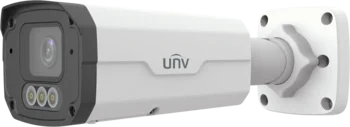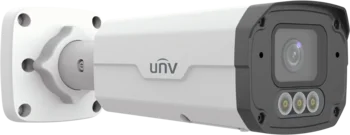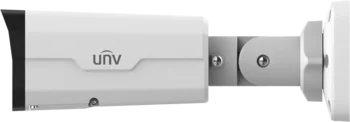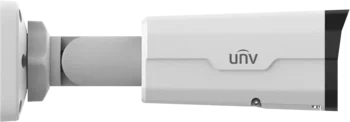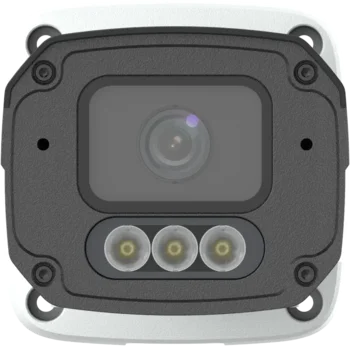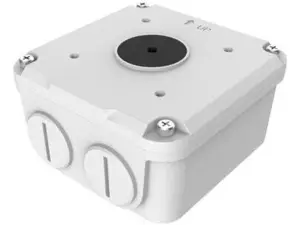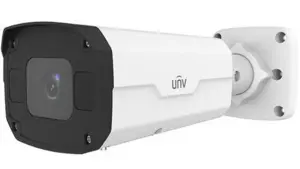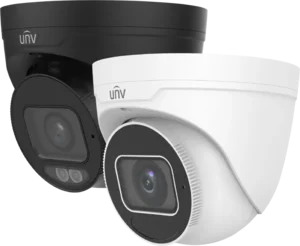Uniview 4MP VF smart-bullet 24/7 color+IR
Robust outdoor 24/7 color camera with analysis and dual lighting
- outdoor camera with variable zoom (IP67)
- color images around the clock (24/7 color)
- switch between IR and visible white light as needed
- space for SD card (up to 128GB)
- Vandal proof (IK10)
With its motorized zoom and focus, PoE, as well as dual lighting and SD card, this camera is a multitool that can solve most types of tasks. The camera even has alarm in and out options so it can work together with other electrical installations.
| IPC2324SE-ADZK-WL-I0 | |||||||
| Camera | |||||||
| Sensor | 1/1.8", 4.0 megapixel, progressive scan, CMOS | ||||||
| Minimum Illumination | Colour: 0.0005 lux (F1.2, AGC ON) 0 lux with IR/LED on |
||||||
| Day/Night | IR-cut filter with auto switch (ICR) | ||||||
| Shutter | Auto/Manual, 1 ~ 1/100000s | ||||||
| Adjustment angle | Pan: 0° ~ 360° | Tilt: 0° ~ 90° | Rotate: 0° ~ 360° | ||||
| WDR | 120dB | ||||||
| S/N | >56dB | ||||||
| Lens | |||||||
| Lens | 2.8 ~ 12mm, AF automatic focusing and motorized zoom lens | ||||||
| Iris | Fixed | ||||||
| Field of View (H) | 102.4°~ 49.2° | ||||||
| Field of View (V) | 54.7°~ 27.8° | ||||||
| Field of View (D) | 106.8°~55.0° | ||||||
| DORI | |||||||
| DORI Distance | Lens (mm) | Detect(m) | Observe(m) | Recognize(m) | Identify(m) | ||
| 2.8 | 43.4 | 17.4 | 8.7 | 4.3 | |||
| 12.0 | 186.2 | 74.5 | 37.2 | 18.6 | |||
| Illuminator | |||||||
| LED Distance | Up to 30m (98ft) | ||||||
| Wavelength | 850nm | ||||||
| IR On/Off Control | Auto/Manual | ||||||
| Video | |||||||
| Video Compression | Ultra265, H.265, H.264, MJPEG | ||||||
| H.264 code profile | Baseline profile, Main profile, High profile | ||||||
| Frame Rate | Main Stream: 4MP (2688*1520), Max 30fps;4MP (2560*1440), Max 30fps; 3MP (2304*1296), Max 30fps; 1080P (1920*1080), Max 30fps; Sub Stream: 720P (1280*720), Max 30fps; D1 (720*576), Max 30fps; 640*360,Max 30fps Third Stream: D1 (720*576), Max 30fps; 640*360,Max 30fps; 2CIF(704*288), Max 30fps; CIF(352*288), Max 30fps; |
||||||
| Video Bit Rate | 128 Kbps~16 Mbps | ||||||
| U-code | Support | ||||||
| OSD | Up to 8 OSDs | ||||||
| Privacy Mask | Up to 4 areas | ||||||
| ROI | Up to 8 areas | ||||||
| Video Stream | Triple streams | ||||||
| Image | |||||||
| White Balance | Auto/Outdoor/Fine Tune/Sodium Lamp/Locked/Auto2 | ||||||
| Digital noise reduction | 2D/3D DNR | ||||||
| Smart Illumination | Support | ||||||
| Flip | Normal/Vertical/Horizontal/180°/90°Clockwise/90°Anti-clockwise | ||||||
| Dewarping | N\A | ||||||
| HLC | Support | ||||||
| BLC | Support | ||||||
| Defog | Digital Defog | ||||||
| Intelligent | |||||||
| Smart intrusion prevention | Support false alarm filtering: Cross Line detection, Intrusion detection, Enter Area detection, Leave Area detection | ||||||
| Statistical Analysis | People counting, support people flow counting and crowd density monitoring | ||||||
| Events | |||||||
| Basic Detection | Motion detection, Ultra motion detection, Tampering alarm, Audio Detection | ||||||
| General Function | Watermark, IP Address Filtering, Alarm input, Alarm output, Access Policy, ARP Protection, RTSP Authentication, User Authentication | ||||||
| Audio | |||||||
| Audio Compression | G.711U, G.711A | ||||||
| Audio Bitrate | 64 Kbps | ||||||
| Two-way audio | Support | ||||||
| Suppression | Support | ||||||
| Sampling Rate | 8KHZ | ||||||
| Storage | |||||||
| Edge Storage | Micro SD, up to 256GB | ||||||
| Network Storage | ANR, NAS(NFS) | ||||||
| Network | |||||||
| Protocols | IPv4, IPv6, IGMP, ICMP, ARP, TCP, UDP, DHCP, PPPoE, RTP, RTSP, RTCP, DNS, DDNS, NTP, FTP, UPnP, HTTP, HTTPS, SMTP, 802.1x, SNMP, QoS, RTMP,SSL/TLS, SSH | ||||||
| Compatible Integration | ONVIF (Profile S, Profile G, Profile T), API,SDK | ||||||
| User/Host | Up to 32 users. 2 user levels: administrator and common user | ||||||
| Security | Password protection, Strong password, HTTPS encryption, Export operation logs, Basic and digest authentication for RTSP, Digest authentication for HTTP, TLS 1.2, WSSE and digest authentication for ONVIF | ||||||
| Client | EZStation EZView EZLive |
||||||
| Web Browser | Plug-in required live view: IE 10 and above, Chrome 45 and above, Firefox 52 and above, Edge 79 and above | ||||||
| Plug-in free live view: Chrome 57.0 and above, Firefox 58.0 and above, Edge 16 and above | |||||||
| Interface | |||||||
| Audio I/O | Input: impedance 35kΩ; amplitude 2V [p-p] | ||||||
| Output: impedance 600Ω; amplitude 2V [p-p] | |||||||
| Alarm I/O | 1/1 | ||||||
| RS485 | N/A | ||||||
| Built-in Mic | Built-in two mics | ||||||
| Built-in Speaker | N/A | ||||||
| WIFI | N/A | ||||||
| Network | 1 * RJ45 10M/100M Base-TX Ethernet | ||||||
| Video Output | N/A | ||||||
| Certifications | |||||||
| EMC | CE-EMC (EN 55032: 2015+A1:2020,EN 61000-3-3: 2013+A1: 2019,EN IEC 61000-3-2: 2019+A1: 2021,EN 55035: 2017+A11:2020) FCC (FCC CFR 47 part15 B, ANSI C63.4-2014) |
||||||
| Safety | CE LVD (EN 62368-1:2014+A11:2017) CB (IEC 62368-1:2014) UL (UL 62368-1, 2nd Ed., Issue Date: 2014-12-01) |
||||||
| Environment | CE-RoHS (2011/65/EU;(EU)2015/863); WEEE (2012/19/EU); Reach (Regulation (EC) No 1907/2006) | ||||||
| Protection | IP67 (IEC 60529:1989+AMD1:1999+AMD2:2013) IK10 (IEC 62262:2002) |
||||||
| General | |||||||
| Power | DC 12V±25%, PoE (IEEE 802.3af) | ||||||
| Power consumption: Max 11.5W | |||||||
| Power Interface | Ø 5.5mm coaxial power plug | ||||||
| Dimensions (L × W × H) | 245× 86 × 85mm (9.6” × 3.4” × 3.3”) | ||||||
| Weight | 0.9kg (1.98lb) | ||||||
| Material | Metal | ||||||
| Working Environment | -30°C ~ 60°C (-22°F ~ 140°F), Humidity: ≤95% RH (non-condensing) | ||||||
| Strorage Environment | -30°C ~ 60°C (-22°F ~ 140°F), Humidity: ≤95% RH (non-condensing) | ||||||
| surge protection | 6KV | ||||||
| Reset Button | Support | ||||||
There is no reviews yet. Be the first to write us your opinion
Den professionelle måde at levere strøm, til et PoE-kamera, er gennem netværkskablet.
På den måde behøver man kun at trække et enkelt kabel til hvert kamera - og skal ikke døje med 230V og små strømforsyninger.
Strømmen til kameraet leveres gennem netværkskablet fra enten...
- en optager med indbygget PoE, også kaldet NVR. Et typisk valg for installationer op til og med 8 kameraer.
- en PoE-switch. Populært fortalt en fordelerdåse til netværkskabler. Det typiske valg på store installationer eller hvis man ønsker fleksibel kabelføring.
- en PoE-injector. Kan kun levere strøm til et kamera.
Af samme grund følger der ikke strømforsyning med PoE-kameraer. Du kan bestille en klassisk strømforsyning her, hvis du ikke ønsker at benytte PoE.
Smart and robust outdoor camera that can see color around the clock.
This smart "bullet" camera is best suited for outdoor surveillance, but also works well indoors. The camera has the new coveted "Dual lighting" and this means that the camera has both white light and IR. Both types of lighting can be activated separately manually/automatically. The camera has a lot of analysis, so it can classify people and vehicles, but also set up rules for where in the image you can stay and even in which direction they can move. If the rules are violated, a notification is immediately sent with two buttons, a " playback" and a "live view".
Below you can read a slightly more in-depth explanation:
Bullet camera
This camera is a "bullet" camera and it only tells about the camera's physical form. Bullet cameras are typically defined as an elongated outdoor camera that often resembles a full paper towel in length and half a paper towel in thickness. However, bullet cameras certainly have their merits, as they often have a more preventive effect and have better night lighting.
Bullet surveillance cameras are best mounted at a height where they cannot be reached (e.g. over 4 meters)
Outdoor use
This is an outdoor surveillance camera and is suitable for the Nordic environment, as it can withstand water, moisture, heat and cold. The camera can be mounted both horizontally, vertically and upside down. There are also brackets for mounting, which you can see here on the page in the accessories tab.
Always at home with mobile access
Access the camera from all over the world with free APP. Regardless of whether you use a hard disk recorder (NVR) or use the camera as a "stand-alone", it can be used license-free on your mobile, tablet and computer. It does not require configuring a router or firewall, as a secure VPN is created between the camera and your phone, so you do not have to remember or change IP addresses as you had to in the old days. You just have to remember your username and password - even when you change phones.
From your APP you can also view, download and share recordings via email, cloud storage, etc. You can also share with and cancel sharing with your contacts directly from the APP.
Variable lens
In short, a variable lens means that you can change the angle of the camera so that it can be adapted to all situations. A camera like this has a small motor on it for zoom and focus, so you really just have to point the camera in the right direction, then you set the zoom and focus from the mobile and the computer. In the data sheet you can see the camera FOV (Field Of View) in degrees when it is zoomed all the way out and all the way in. You can find the data sheet here on the page.
Variable lens is adjusted on the day of installation and there will mostly be no need to adjust afterwards, unless cameras need to be moved or rotated. You cannot replace the lens on the camera, so if you are in doubt about which lens or angle is optimal, motorized optics may be the right solution.
"When I was driving as a technician, I always had cameras with variable optics in the car in case the customer needed an extra one, because they can be adapted to all tasks" - Christian, technician
H265
The newest and most effective video surveillance compression protocol is called H265, and it actively helps protect your network and storage media. The compression happens completely automatically and if you compare with the previous protocol, H264, there is a very large effect to be felt.
In short, H265 simply means that your network is loaded to a much lesser degree and there is room for several hours of recordings on the hard drive.
The world's leading manufacturers of video surveillance have even gone a step further and created more efficient protocols. Some manufacturers call it “H265+” others call it “Ultra H265/U-code”
If you compare e.g. H264 with "Ultra H265", then you can save up to 75% of the required capacity. This means that what you could have on 4 discs (H264) can now be on a single disc (H265 U-code)
ONVIF
ONVIF is a common protocol that enables the equipment to be linked with brands. So you e.g. can take a camera from manufacturer “X” and add to a recorder from manufacturer “Y”. It makes it easy to choose the best from several worlds. This also applies to 3rd party software, such as Arcules, Eagles eye, Milestone etc.
If you use equipment that supports ONVIF, you get good flexibility that makes it easy to adapt future systems.
Nightvision (24/7 color+IR)
The combination of the best of two worlds
For a long time you have had to choose whether you want to go the Infrared route (invisible night vision), but the price for this has been that the images will be black and white or whether you should choose 24/7 color, which emits visible white light, but to in turn provides beautiful and usable night images. That time is now over - with dual lighting you get the best of both technologies.
At night, the camera generally uses the almost invisible IR illumination, which just appears as a cigarette glow to the human eye. When it detects an activity, it switches on the white light to obtain the best possible color images.
IR
The surveillance camera has built-in infrared night vision, which automatically switches on when the light level becomes too low, in the data sheet you can see the exact minimum light level required before the camera switches to night vision. The IR diodes turn on automatically when it gets too dark and are largely invisible to the human eye, but completely visible to the camera. In the data sheet you can also see how many meters the diodes reach.
24/color ( ColorHunter)
Colorhunter is a technology that enables the cameras to deliver color images around the clock. The camera has an enormously light-sensitive image sensor and therefore incredibly little light is needed to create a color image. If the light level falls below the minimum limit, the camera itself can turn on additional lighting.
Colorhunter therefore goes very well with outdoor lighting and especially sensor-activated outdoor lighting, as it typically provides the necessary lighting and super good images. ColorHunter has an impressive aperture of 1.0 which, combined with strong algorithms, helps to give you the best images
Colorhunter is a good alternative to Hikvision's ColorVu if the camera must meet the US authorities' strict NDAA (National Defense Authorization Act).
SD card
This surveillance camera can contain a memory card (micro SD), which enables it to save recordings without a hard disk recorder. When the recordings are to be played, this is done directly from mobile/tablet/PC, from which they can be downloaded, shared with others or uploaded to e.g. google drive, so it is not necessary to peel the card out. The recordings are saved on the SD card itself. This is a sensible solution if you only need to have a single camera up, but if you need two or more, we almost always recommend a recorder.
Recordings
The camera can record both on a hard disk recorder and an internal memory card (micro-SD card, not included) or both at the same time. Regardless of which model you choose, you can watch the recordings directly on your mobile/tablet.
You can choose one or more of the following options:
- 24/7 recording
- Motion recording
- Recording by smart event (intelligent analysis)
- Some models also support recordings by signal from other equipment, e.g. a burglar alarm
- If needed, it can also transfer images to an FTP server or a network hard drive.
You choose which types of recordings are used and when, as it can be planned in a "schedule" of when you want to use which types. The camera also supports recording before and after events. This means that the camera secures recordings typically 5 seconds before a movement and 30 seconds after a movement has ceased.
The recordings can be overwritten when there is no more space, after x number of days or stop the recordings when there is no more space.
ANR
Automatic Network Replenishment, is a concept that makes it possible to protect you against theft of the recorder, as it provides a good backup function simply by inserting an SD card directly into the camera. When ANR is switched on in the equipment, a safety mechanism is activated that means that if the camera loses connection to the recorder, it starts recording directly onto the SD card, but as soon as the recorder comes online again, the recordings that the SD card has are synchronized, but which is missing in the recorder. It also significantly protects the lifetime of the SD card.
But it doesn't necessarily have to be the cleaning lady who pulls out the plug and stops the recorder. It can also be a theft of the recorder and then the recordings that would otherwise have been lost will be ready to download from the camera.
See also section on SD Card
Exceptions
The camera can be set to notify you if it goes into an emergency mode, this could be, for example, if the SD card fails so that it cannot record, in the event of hacking attempts etc. then an email or a PUSH message can be sent.
Blanking zone
Blanking zone, covered area, personal protective mask, masking etc. are all names for the function that makes it possible to cover an area of the image that must not be seen or recorded.
Once the area is drawn in, it's easy to turn it on and off with a tick, but once it's on, it can't be removed on a recording. A powerful tool when complying with legislation.
WDR
WDR provides better/more useful images in poor light and backlight
Wide Dynamic Range is technology that electronically combats the poor lighting conditions, and lighting conditions are the Alpha and Omega for image quality and thus often decisive for whether you can actually use the footage for something. Everyone has probably tried to take a picture of a person/object standing between the camera and a light source, e.g. of a person entering through a glass partition and with strong sunlight in the background. His face and body will be almost like a silhouette and it may be difficult to identify the person. WDR is very good at combating the backlight that comes in the background, therefore cameras with a good WDR are typically best for entrance areas, facades (from the inside), receptions and the like.
VMS
If you want to use your computer to watch "live" and "playback", a Video Management System has been created that you can install and thereby enable you to follow your surveillance from all over the world. The computer can e.g. can be connected to TV with HDMI - and thus have a mobile command center :)
On your VMS, you can do most of the things you can, including:
- Watch live and playback
- Make smart playback
- Log in to your cloud account
- Sort in recordings
- Export recording
- Use electronic overview card
- Pull alarm inputs and outputs.
- Get alarm notifications
- And many many more things
Remember that a recorder also has an HDMI output, so it can be connected to a TV directly.
Power and PoE
The camera can be supplied with the necessary power in two ways, either by PoE or by 12 volt DC. However, most people choose PoE today, as it briefly supplies power from the switch or hard disk recorder. You just have to make sure you use a switch or hard disk recorder that supports PoE.
If you do not have the opportunity to pull out a network cable to the surveillance camera or if you want to use a switch that does not support PoE, then this is no problem, as the camera can also be connected to a 12 volt power supply (not included)
PoE basically reaches approx. 70 meters (CAT6), but there are different ways to extend the distance. For example, there is nothing to prevent you from placing several switches one after the other and thus extending the distance. Some manufacturers have also created technologies that can extend the distance significantly, please contact us if you need to connect to a camera at distances over 70 meters.
Vandal proof IK10
This camera is approved IK10, which means it qualifies as a "vandal proof" camera. It is of course still a good idea to mount the camera at a good height so that it cannot be easily reached, and to hide or protect the cable so that it cannot be disconnected or cut. If you do not have the opportunity to hide the assembly in the wall, eaves, etc., we would recommend buying a bracket for the camera so that the assembly is protected as best as possible.
Reset
Physical reset is available. Follow the reset procedure to reset to factory settings. If you are in doubt about how to do it, the procedure can be found in the accompanying guide, which can also be downloaded from the tab on this page and the manufacturer's website.
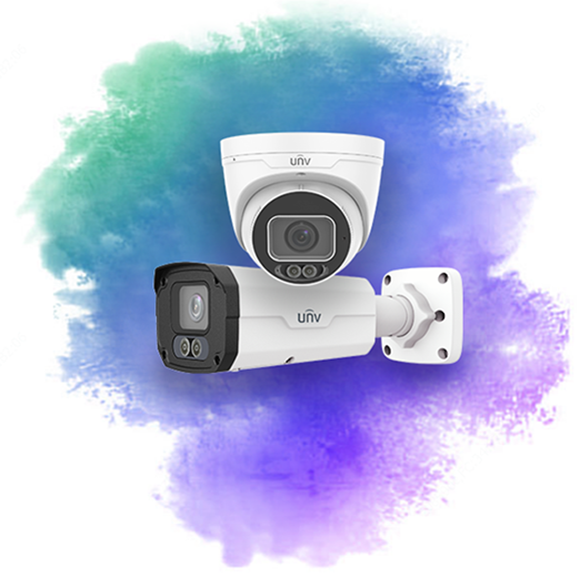
Colorhunter
This means with clear moonlight, the light from a street lamp - or the camera's built-in lamp, a colorhunter can film in color 24/7

Power over Ethernet
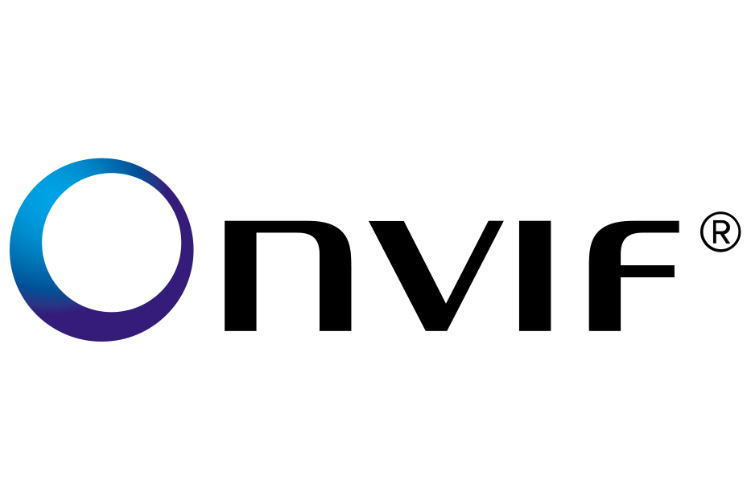
ONVIF full member
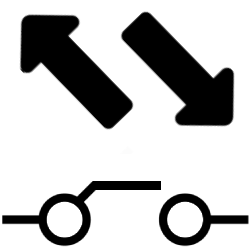
Alarm in/out
Alarm in and out allows you to connect cameras and recorders to other equipment.
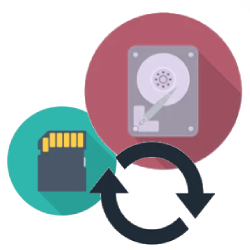
ANR
If there are network problems, the camera stores the recordings on an SD- card - and then sends them to the recorder when the connection is stable again.
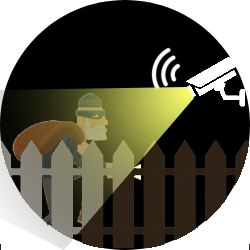
Smart Intrusion Prevention
Den professionelle måde at levere strøm, til et PoE-kamera, er gennem netværkskablet.
På den måde behøver man kun at trække et enkelt kabel til hvert kamera - og skal ikke døje med 230V og små strømforsyninger.
Strømmen til kameraet leveres gennem netværkskablet fra enten...
- en optager med indbygget PoE, også kaldet NVR. Et typisk valg for installationer op til og med 8 kameraer.
- en PoE-switch. Populært fortalt en fordelerdåse til netværkskabler. Det typiske valg på store installationer eller hvis man ønsker fleksibel kabelføring.
- en PoE-injector. Kan kun levere strøm til et kamera.
Af samme grund følger der ikke strømforsyning med PoE-kameraer. Du kan bestille en klassisk strømforsyning her, hvis du ikke ønsker at benytte PoE.
